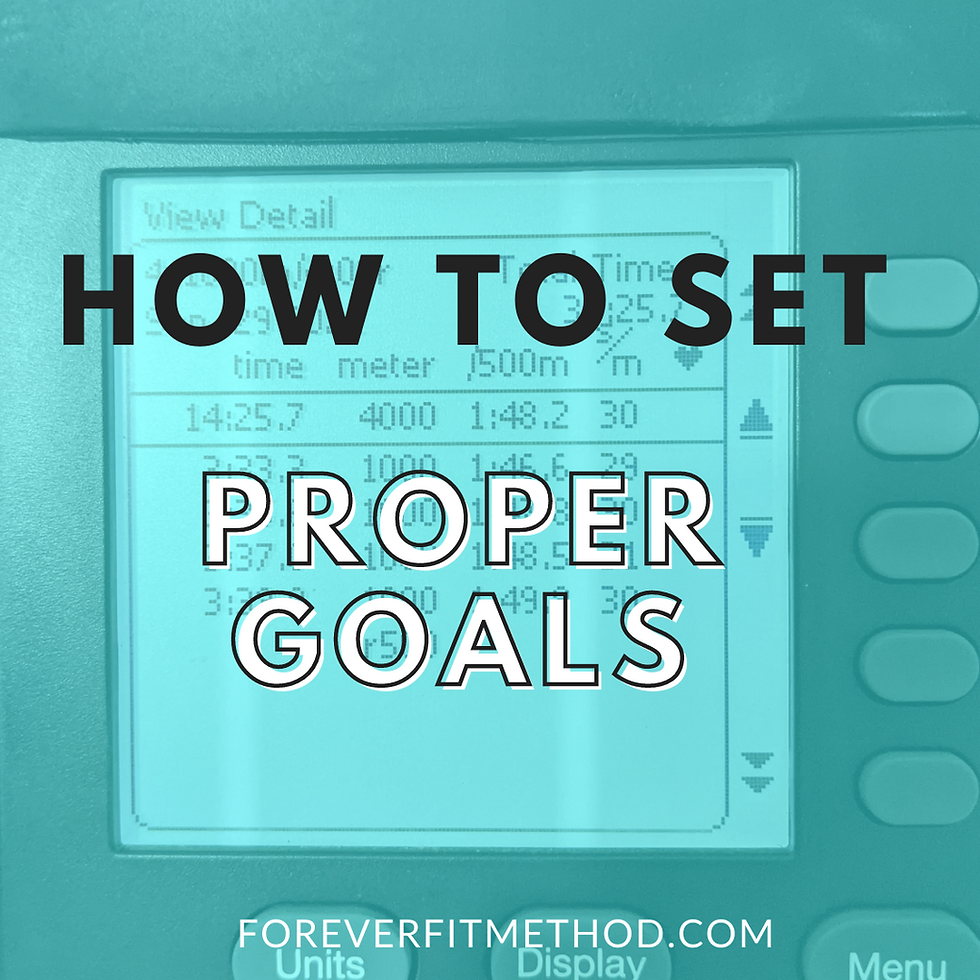How to set proper goals on the rower
- brittanytblocker
- Oct 20, 2021
- 3 min read
Now that you are becoming proficient at the rower, it’s time to start talking about how you can set proper goals on the machine during your row workouts.

I’m sure you’ve had times when you weren’t sure what pace to try and hold or what stroke rate you feel most comfortable with.
Obviously the first answer is just with practice and time on the rower, you’ll develop some knowledge on how different distances and workouts feel for you.
If you’ve been keeping up with some of these workouts, you’ll know that I give recommendations on stroke rate, as well as pacing (70%, 80% etc.)
But how do you really KNOW what 70% feels like?
Let’s get into it.
How much effort should you be putting in?
It’s easy to just say “go as hard as you can” and not think much more about it then that. However this thought is both not ideal and not helpful because in most cases this will force you to push too hard and not be able to complete your rowing effort to your best ability.
I like to think of it like this:
The longer the rowing piece, the less intense you should be thinking of going.
And let’s be clear, when I talk about intensity, I’m strictly talking about your split time (2:05 AVG/500m on your monitor).
So let’s say you are hitting a 5k row straight with no rest, you wouldn’t want to keep your split time too high because you’ll burn out if you go out too hard, too early.
The shorter your rowing piece, the harder, or more intense your pace should be.
So let’s say you are doing a minute of work, followed by a minute of rest. This is meant to be a more intense pace, a “lower split time”, let’s say you row at a 1:55.
The point of this is scaling your intensity properly to your rowing workouts. If you go too light on a shorter piece of rowing, you probably aren’t getting as much out of the workout as you can.
How should the body feel during and after a rowing workout?
Intensity will certainly have an impact on how your body FEELS during and after a workout. Some key factors that you might want to look out for are the following:
Feeling breathless during a sprint is a good thing (as long as there is rest involved in between pieces!)
Feeling like you can still partly hold a conversation during a longer piece of rowing is probably a good thing.
Feeling a burn in your quads, hamstrings, abs, and arms during a rowing piece
Feeling the heart beating during and after a rowing piece, probably with some sweat dripping!
Things you might want to look out for are the following:
Feeling dizzy or lightheaded might mean that you aren’t hydrated enough, or that you are rowing with poor ventilation.
Gasping for breath should really only happen on all out efforts or time trials where you are pushing your body to the edge.
Heart rate not coming down after 5-10 minutes after finishing rowing (this really just means you probably went a little too hard)
Muscle cramping will also be an indicator of being dehydrated
What to shoot for while on the rower
Now that you understand some good things and some bad things you might be feeling, you can then determine your intensity moving forward.
In order to get better on the rower, you need to push yourself into new territory every time you get on it. Whether that is by dropping your split time just a little bit, by increasing your stroke rate to work harder on a piece, or by shooting for a faster time trial on a 500m, 1000m, or 2000m row.
The only way to get better is to push harder. This isn’t to say that every single time you get on the rower your workout will be better than the last. Some days we don’t sleep as well, aren’t as energized, have stress in our lives...lots of things can happen to hurt the body's ability to reach your peak goals.
However as you’ve been hitting some rowing workouts from the newsletter thus far, you probably have an idea of how it feels to be a specific split time.
For example, if I told you to think about how rowing at a 2:30 pace would feel like for you, you probably know how long you could sustain that pace with a given amount of effort.
So as you become more accustomed to the rower and hone in on your form - the knowledge of what is a tough pace, and what is an easy pace will come natural for you.






Comments